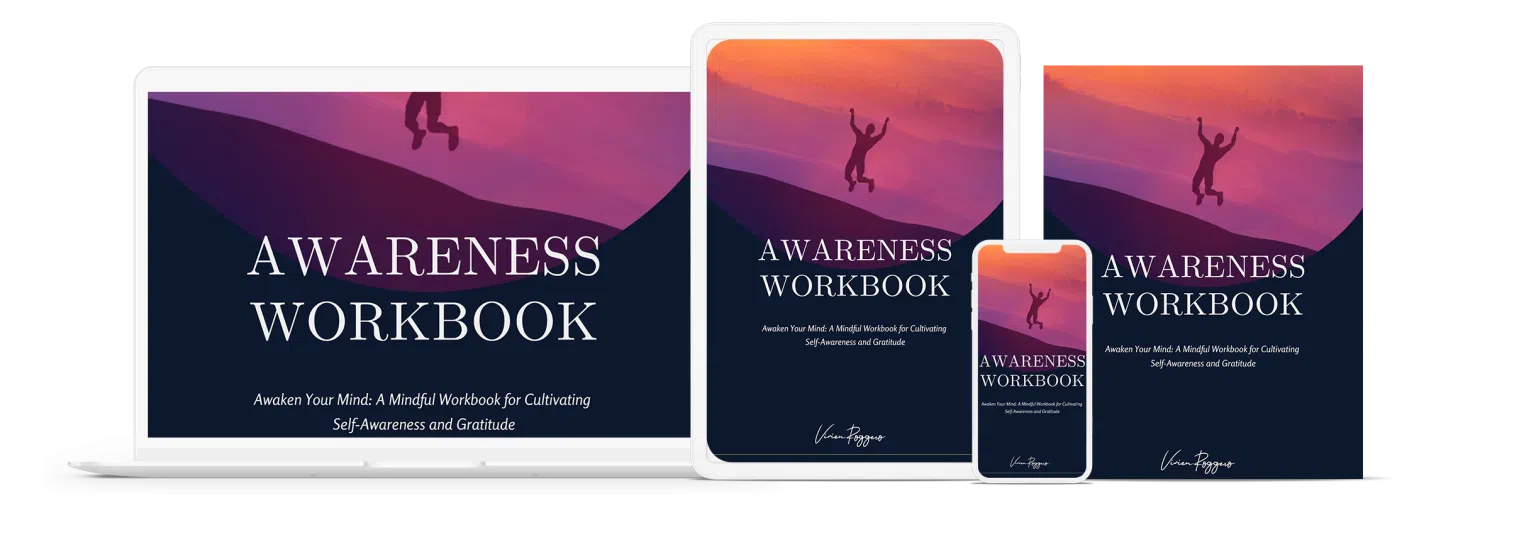Have you ever felt stuck in a rut or in need of a fresh perspective on life? TED Talks have become a go-to resource for individuals seeking inspiration, motivation, and actionable advice. This article highlights the top 10 ted talks for life transformation. Talks that promise to ignite change and inspire you to take meaningful steps toward a better life. From creativity and vulnerability to leadership and happiness, these talks cover a wide range of topics that can help you on your journey to personal transformation.
Table of Contents
Key Takeaways about the top 10 ted talks for life transformation
Elizabeth Gilbert encourages embracing your creative genius and not being afraid of failure.
Brené Brown highlights the importance of vulnerability and how it can lead to stronger connections and personal growth.
Simon Sinek explains how great leaders inspire action by starting with ‘why’ and focusing on purpose.
Tony Robbins delves into the reasons behind our actions and how understanding them can lead to a more fulfilling life.
Amy Cuddy discusses the impact of body language on our confidence and overall success.
Elizabeth Gilbert – Your Elusive Creative Genius
Elizabeth Gilbert’s TED Talk, “Your Elusive Creative Genius,” is a profound exploration of the nature of creativity. She shares her personal journey as a writer, especially the pressure she felt after the massive success of her memoir, Eat, Pray, Love. Gilbert challenges the conventional notion that creativity comes solely from within us. Instead, she draws on ancient Greek and Roman philosophies that attribute creative genius to an external, unseen being. This perspective, she argues, can protect artists from the narcissism of success and the dejection of failure.
Key Takeaways
Creativity is not entirely internal; it can be seen as a collaboration with external forces.
This mindset can alleviate the psychological burden on artists.
Embracing this philosophy can lead to a healthier relationship with one’s creative work.
Personal Reflection
Elizabeth Gilbert TED Talk “Your Elusive Creative Genius” in 2010, was GOLD. Her insights on creativity and the pressures of success resonated deeply with me. When I find struggle in my creative process, I like to rewatch this talk.
Practical Application
Acknowledge external inspiration: Recognize that your creative ideas can come from outside influences.
Relieve pressure: Understand that not all creative work has to be groundbreaking; it’s okay to have ups and downs.
Stay grounded: Keep a balanced perspective on success and failure.
Embracing the idea that creativity is a shared journey can transform how we approach our work and our lives.

Brené Brown – The Power of Vulnerability
Brené Brown is a qualitative researcher and storyteller who delves into the depths of human connection. Her TED Talk, “The Power of Vulnerability,” is one of the top five most-viewed TED Talks in the world, with over 60 million views. In this poignant and funny talk, Brené shares insights from her research that have profoundly changed the way she lives, loves, works, and parents.
Key Insights from Brené Brown’s Research
Brené’s research focuses on our ability to empathize, belong, and love. She discovered that vulnerability is not a weakness but a strength. It is the birthplace of innovation, creativity, and change. By embracing vulnerability, we open ourselves up to deeper connections and a more fulfilling life.
The Struggle with Numbing
One of the critical points Brené discusses is our struggle with numbing emotions. Many of us try to avoid vulnerability by numbing our feelings, but this also numbs our ability to experience joy and love. Embracing vulnerability means allowing ourselves to feel deeply, both the good and the bad.
Practical Applications
Brené offers practical advice on how to embrace vulnerability in our daily lives:
Practice gratitude and joy, even in difficult times.
Cultivate authenticity by letting go of who we think we should be and embracing who we are.
Develop resilience by facing our fears and uncertainties head-on.
Embracing vulnerability is a journey of self-discovery and personal growth. It requires courage, but the rewards are profound.
Brené’s TED Talk is a powerful reminder that vulnerability is essential for a meaningful and connected life.

Simon Sinek – How Great Leaders Inspire Action
Simon Sinek’s TED Talk, “How Great Leaders Inspire Action,” is a must-watch for anyone looking to ignite their leadership journey. Sinek introduces the concept of the golden circle, which emphasizes the importance of understanding the “why” behind our actions before explaining the “what” and “how.” This approach has been a game-changer for many leaders and organizations.
The Golden Circle
Sinek uses a simple yet powerful diagram to illustrate his point. The golden circle consists of three layers: Why, How, and What. According to Sinek, most organizations communicate from the outside in, but inspired leaders and organizations communicate from the inside out. This means starting with the “why”—the purpose, cause, or belief that inspires you to do what you do.
Real-World Examples
Sinek provides compelling examples to back up his theory. He cites Apple, Martin Luther King Jr., and the Wright Brothers as individuals and organizations that have successfully used the golden circle to inspire action. For instance, Apple is not just a tech company; it’s a company that believes in challenging the status quo and thinking differently.
Why It Matters
Understanding and communicating your “why” can be a powerful tool for inspiring others. It creates a sense of purpose and direction, making it easier to motivate and lead effectively. This concept is not just for business leaders but for anyone looking to make a meaningful impact in their personal and professional lives.
“People don’t buy what you do; they buy why you do it.” This quote from Sinek encapsulates the essence of his message. When you start with why, you inspire others to join you in your mission, creating a ripple effect of positive change.
In conclusion, Simon Sinek’s talk is a powerful reminder that great leadership starts with understanding and communicating your purpose. It’s a lesson that can transform not just your leadership style but your entire approach to life.

Tony Robbins – Why We Do What We Do
Tony Robbins’ TED Talk, “Why We Do What We Do,” delves into the core of human motivation and behavior. Robbins emphasizes that emotion is the force of life and the ultimate resource. He explores how understanding human needs and emotions can drive performance and help people contribute to a cause beyond themselves. Robbins shares his insights from years of coaching, highlighting that intrinsic motivation often outweighs extrinsic rewards, especially in complex situations.
The Power of Emotion
Robbins believes that emotion is the key to unlocking human potential. He states, “If we get the right emotion, we can get ourselves to do anything.” This idea is central to his coaching philosophy, where he helps individuals navigate critical situations by tapping into their emotional resources.
Attention and Perception
Robbins explains how our attention steers our perception and reality. He demonstrates this through a surprise trick, showing the audience the power of attention and misdirection. This segment is both engaging and thought-provoking, leaving the audience to ponder, “If you could control somebody’s attention, what would you do with it?”
Human Needs and Beliefs
Understanding human needs and beliefs is crucial for personal and professional growth. Robbins invites the audience to explore the needs, beliefs, and emotions that control them. By doing so, individuals can better appreciate what drives them and others, leading to more meaningful and impactful actions.
“If you’re creative, playful, fun enough, can you get through to anybody… If you don’t have the money, but you’re creative and determined, you find the way.” – Tony Robbins
Robbins’ talk is a powerful reminder that by harnessing our emotions and understanding our intrinsic motivations, we can achieve extraordinary things. His insights are not just theoretical but are grounded in his extensive experience as a coach, making his advice both practical and inspiring.
Amy Cuddy – Your Body Language May Shape Who You Are
Amy Cuddy’s TED Talk delves into the fascinating world of body language and its profound impact on our lives. She explores how our own body language can influence our thoughts, feelings, and overall confidence. Cuddy’s research suggests that adopting certain power poses can significantly boost our self-confidence and reduce stress levels. This concept, often summarized as “fake it until you become it,” is backed by scientific evidence showing changes in hormone levels after just a few minutes of power posing.
The Science Behind Power Posing
Cuddy explains that power posing can increase testosterone levels by 20% and decrease cortisol levels by 25%. These hormonal changes can lead to improved performance in stressful situations, making us feel more powerful and in control.
Practical Applications
Incorporating power poses into your daily routine can be simple and effective. Here are a few steps to get started:
Stand tall with your feet apart and hands on your hips for two minutes before a big meeting.
Sit with your legs stretched out and arms open wide to feel more relaxed and confident.
Practice these poses regularly to build a habit of confidence.
Embracing the power of body language can transform not only how others perceive us but also how we perceive ourselves. It’s a small change with a potentially huge impact on our lives.

Shawn Achor – The Happy Secret to Better Work
In this fast-moving and very funny talk, psychologist Shawn Achor argues that, actually, happiness inspires us to be more productive. Achor’s research has shown that the lens through which we view the world shapes our reality. Changing this lens allows you to change your happiness. It’s possible to train your brain for happiness—and doing so can also set you up for success.

Tim Urban – Inside the Mind of a Master Procrastinator
Tim Urban’s TED Talk, “Inside the Mind of a Master Procrastinator,” is a humorous and insightful exploration of why we procrastinate. Urban uses honest and humorous narratives to discuss his own experiences with procrastination, such as writing his college thesis just three days before the deadline. He explains that there are two types of procrastination: short-term, which involves tasks with deadlines, and long-term, which includes activities like exercising or starting a business. The latter can lead to significant unhappiness and regret.
Key Takeaways
Everyone procrastinates, but it’s crucial to avoid long-term procrastination.
Urban’s use of quirky symbolism and cartoonish illustrations makes the topic relatable and engaging.
Most Inspiring Quote
“So I think we need to all take a long, hard look at that [life calendar]. We need to think about what we’re really procrastinating on… And because there’s not that many boxes on there, it’s a job that should probably start today.”
Storytelling Tips
Don’t be afraid to use your own illustrations, even if they’re amateurish. With the right tone, such as with a humorous talk, such illustrations can work.

Susan Cain – The Power of Introverts
Susan Cain’s TED Talk, “The Power of Introverts,” is a profound exploration of the often-overlooked strengths of introverted individuals. Cain, the author of the #1 New York Times bestseller Quiet: The Power of Introverts in a World That Can’t Stop Talking, challenges the cultural bias that favors extroversion. She argues that this bias leads to a significant loss of talent and creativity, as introverts are often pressured to conform to extroverted norms.
The Misconception of Introversion
Introversion is frequently mistaken for shyness, but Cain clarifies that introverts are not necessarily shy. Instead, they prefer less stimulating environments and are often more reflective. This distinction is crucial in understanding the unique contributions introverts can make.
The Cultural Bias Against Introverts
Cain highlights how society’s preference for extroversion can stifle the potential of introverts. From classrooms to workplaces, the emphasis on group activities and open office plans can be overwhelming for introverts, leading to a loss of their extraordinary talents.
Embracing Introverted Strengths
Cain encourages introverts to embrace their natural tendencies and leverage their strengths. She shares her own journey of trying to fit into an extroverted mold as a Wall Street lawyer before realizing her true calling as a writer. Embracing one’s introverted nature can lead to greater personal and professional fulfillment.
Introverts bring a wealth of creativity, thoughtfulness, and innovation to the table. By recognizing and valuing these traits, we can create more inclusive and productive environments.
Practical Steps for Supporting Introverts
Create Quiet Spaces: Ensure there are areas where introverts can work without constant stimulation.
Encourage Deep Work: Allow for uninterrupted time to focus on complex tasks.
Value Thoughtful Input: Recognize and appreciate the well-considered contributions of introverts.
By understanding and valuing the power of introverts, we can unlock a wealth of potential that benefits everyone.

Dan Gilbert – The Surprising Science of Happiness
Dan Gilbert’s TED Talk, “The Surprising Science of Happiness,” delves into the evolution of the human brain and its impact on our pursuit of happiness. One fascinating point Gilbert makes is about the prefrontal cortex, a part of the brain that has evolved significantly over the last two million years. This evolution is not just a quirky feature; it’s a window to understand humanity at a deeper level, particularly our unique pursuit of happiness.
The Evolution of the Human Brain
Gilbert explains that the human brain tripled in size over two million years, primarily due to the growth of new structures like the prefrontal cortex. This part of the brain plays a crucial role in our ability to simulate experiences and predict future outcomes, which is essential for our pursuit of happiness.
Synthetic vs. Natural Happiness
In his talk, Gilbert breaks down happiness into two basic components: the happiness we stumble upon and the happiness we create. He refers to these as “synthetic” and “natural” happiness. Synthetic happiness is what we create when we don’t get what we want, while natural happiness is what we experience when we do get what we want. Gilbert’s research reveals a shocking truth: synthetic happiness can be just as fulfilling as natural happiness.
The Paradox of Choice
Gilbert also touches on the paradox of choice, explaining that having too many options can actually make us less happy. When we have fewer choices, we are more likely to be satisfied with our decisions. This insight is crucial for anyone looking to simplify their life and focus on what truly matters.
Embrace gratitude, mindfulness, and experiences for true happiness and success. Unlock your potential with 7 empowering practices.
Practical Takeaways
Embrace Gratitude: Practicing gratitude can significantly boost your happiness levels.
Mindfulness: Being present in the moment helps you appreciate life more fully.
Limit Choices: Reducing the number of choices you have can lead to greater satisfaction.
Focus on Experiences: Investing in experiences rather than material goods leads to longer-lasting happiness.
By understanding the science behind happiness, we can make more informed choices that lead to a more fulfilling life. Explore 9 daily habits for increased happiness and personal growth.

Mel Robbins – How to Stop Screwing Yourself Over
Mel Robbins has gained a following for her tough-love approach and honest advice to remove the mental clutter and habits that sabotage our dreams. In her TED Talk, she spells out these strategies with clarity and conviction. Her message is simple yet powerful: stop waiting for motivation and start taking action.
The 5 Second Rule
The cornerstone of Robbins’ talk is the 5 Second Rule. This rule is a form of metacognition that helps you override your mental blocks. When you have an instinct to act on a goal, you must physically move within five seconds or your brain will kill the idea. This simple technique can be a game-changer in overcoming procrastination and self-doubt.
Overcoming Fear and Anxiety
Robbins explains that fear and anxiety are just habits that can be broken. By using the 5 Second Rule, you can interrupt these patterns and replace them with actions that lead to growth. This approach is not just theoretical; it’s backed by neuroscience and has helped countless individuals transform their lives.
Building Confidence
Confidence is not something you are born with; it’s a skill you build. Robbins emphasizes that by consistently pushing yourself to take action, you build the confidence needed to achieve your goals. The 5 Second Rule serves as a tool to help you take those crucial first steps.
The journey to self-improvement starts with a single decision. By implementing the 5 Second Rule, you can break free from the habits that hold you back and start living a more fulfilling life.
In her powerful talk, Mel Robbins shares transformative insights on how to stop sabotaging yourself and start living your best life. If you’re ready to break limits and revolutionize your life, explore the secrets to effortless transformation with Vivien Roggero’s One Freedom™ Program. Discover how you can achieve boundless growth, unwavering consistency, and profound fulfillment. Join the ranks of those who have chosen to rise and unlock your true potential today!

Conclusion
In the journey of life transformation, the power of inspiration cannot be overstated. The TED Talks we’ve explored in this article are more than just speeches; they are catalysts for change, offering profound insights and practical wisdom to help you navigate your personal and professional growth. Each talk is a testament to the human spirit’s resilience, creativity, and capacity for transformation. As you reflect on these powerful messages, remember that the first step towards change begins with you. Embrace the lessons, take action, and let these talks be the spark that ignites your journey towards a more fulfilling and purpose-driven life. Your transformation starts now, and the possibilities are endless.
Frequently Asked Questions:
Elizabeth Gilbert’s TED Talk, ‘Your Elusive Creative Genius,’ explores the concept of creativity and encourages individuals to embrace their creative genius without fear of failure.
In her TED Talk, ‘The Power of Vulnerability,’ Brené Brown defines vulnerability as the courage to be imperfect, to connect with others, and to be open to emotional risks.
Simon Sinek’s TED Talk, ‘How Great Leaders Inspire Action,’ emphasizes the importance of starting with ‘why’ to inspire and lead others effectively.
Tony Robbins’ TED Talk, ‘Why We Do What We Do,’ delves into the reasons behind human behavior and the driving forces that motivate us to take action.
In her TED Talk, ‘Your Body Language May Shape Who You Are,’ Amy Cuddy explains how adopting powerful body postures can influence our confidence levels and overall life outcomes.
Shawn Achor’s TED Talk, ‘The Happy Secret to Better Work,’ focuses on the relationship between happiness and productivity, advocating that happiness leads to better work performance.













![2024 Awareness Wordbook by Vivien Roggero [Self-discovery tools]](http://vivienroggero.com/wp-content/uploads/2023/04/Book-Awarness-Full-pack.png)